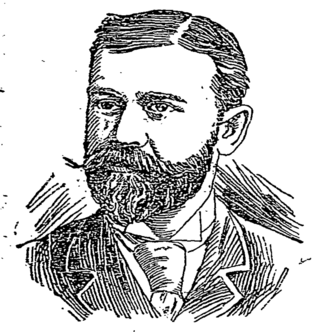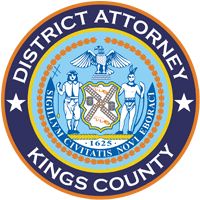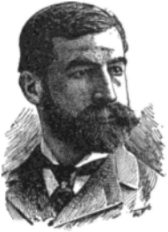
Queens is a borough of New York City, coextensive with Queens County, in the U.S. state of New York. Located at the western end of Long Island, it is the largest of the five New York City boroughs by area. It is bordered by the borough of Brooklyn and by Nassau County to its east, and shares maritime borders with the boroughs of Manhattan, the Bronx, and Staten Island, as well as with New Jersey. Queens is the most linguistically and ethnically diverse place on Earth.

Brooklyn is a borough of New York City. Located on the westernmost end of Long Island, it is coextensive with Kings County in the U.S. state of New York. With 2,736,074 residents as of the 2020 United States census, Kings County is the most populous of the five boroughs of New York City and the most populous county in the State of New York. The population density of Brooklyn was 37,339.9 inhabitants per square mile (14,417.0/km2) in 2022, making it the second-most-densely-populated county in the United States, behind Manhattan, and it had the ninth-highest population of any county nationwide. Were Brooklyn still an independent city, it would be the fourth most populous in the U.S. after the rest of New York City, Los Angeles, and Chicago.

Staten Island is the southernmost borough of New York City, coextensive with Richmond County and situated at the southern most point of New York. The borough is separated from the adjacent state of New Jersey by the Arthur Kill and the Kill Van Kull and from the rest of New York by New York Bay. With a population of 495,747 in the 2020 Census, Staten Island is the least populated New York City borough but the third largest in land area at 58.5 sq mi (152 km2); it is also the least densely populated and most suburban borough in the city.

The Brooklyn Rapid Transit Company (BRT) was a public transit holding company formed in 1896 to acquire and consolidate railway lines in Brooklyn and Queens, New York City, United States. It was a prominent corporation and industry leader using the single-letter symbol B on the New York Stock Exchange.

The City of Greater New York was the proposed consolidation of the City of New York with Brooklyn, western Queens County, and Staten Island. This consolidation was carried out on January 1, 1898. New York had already annexed the Bronx, so the consolidated city sprawled across five counties, which became the five Boroughs of modern New York. Eastern Queens County was excluded and later became Nassau County.
The borough presidents are the chief executives of the five boroughs of New York City. For most of the city's history, the office exercised significant executive powers within each borough, and the five borough presidents also sat on the New York City Board of Estimate. Since 1990, the borough presidents have been stripped of a majority of their powers in the government of New York City.

The New York City Board of Estimate was a governmental body in New York City responsible for numerous areas of municipal policy and decisions, including the city budget, land-use, contracts, franchises, and water rates. Under the amendments effective in 1901, to the charter of the then-recently-amalgamated City of Greater New York, the Board of Estimate and Apportionment was composed of eight ex officio members: the Mayor of New York City, the New York City Comptroller and the President of the New York City Board of Aldermen, each of whom had three votes; the borough presidents of Manhattan and Brooklyn, each having two votes; and the borough presidents of the Bronx, Queens, and Richmond, each having one vote. The La Guardia Reform Charter of 1938 simplified its name and enhanced its powers.

The Boroughs of New York City are the five major governmental districts that compose New York City. The boroughs are the Bronx, Brooklyn, Manhattan, Queens, and Staten Island. Each borough is coextensive with a respective county of the State of New York: The Bronx is Bronx County, Brooklyn is Kings County, Manhattan is New York County, Queens is Queens County, and Staten Island is Richmond County.

The community boards of the New York City government are the appointed advisory groups of the community districts of the five boroughs. There are currently 59 community districts: twelve in the Bronx, eighteen in Brooklyn, twelve in Manhattan, fourteen in Queens, and three in Staten Island.

The 122nd New York State Legislature, consisting of the New York State Senate and the New York State Assembly, met from January 4 to April 28, 1899, during the first year of Theodore Roosevelt's governorship, in Albany.

The 124th New York State Legislature, consisting of the New York State Senate and the New York State Assembly, met from January 2 to April 23, 1901, during the first year of Benjamin B. Odell Jr.'s governorship, in Albany.

Frederick W. Wurster was a Republican Party politician who served as the mayor of the city of Brooklyn, New York, between 1896 and 1897. He was Brooklyn's final mayor before it was consolidated with New York City on January 1, 1898.

The District Attorney of Queens County is the elected district attorney for Queens County in New York State, coterminous with the New York City borough of Queens. The office is responsible for the prosecution of violations of New York state laws.. The current Queens County District Attorney is Melinda Katz, who assumed the duties of the office on January 1, 2020. There was an inauguration on January 6, 2020 at her alma mater, St. Johns University.

The Kings County District Attorney's Office, also known as the Brooklyn District Attorney's Office, is the district attorney's office for Kings County, coterminous with the Borough of Brooklyn, in New York City. The office is responsible for the prosecution of violations of the laws of New York.. The current district attorney is Eric Gonzalez.

The New York City Board of Aldermen was a body that was the upper house of New York City's Common Council from 1824 to 1875, the lower house of its Municipal Assembly upon consolidation in 1898 until the charter was amended in 1901 to abolish the Municipal Assembly and its upper house, and its unicameral legislature from 1875 to 1897 and 1902 to 1937. The corresponding lower house was known as the Board of Assistants or the Board of Assistant Aldermen from 1824 to 1875, while the upper house was known as the Council from 1898 to 1901. In 1938 a new charter came into effect that replaced the Board of Aldermen with the New York City Council.

An election was held in New York City to election the President of its Council on November 2, 1897. The charter of the new City of Greater New York had created a bicameral Municipal Assembly, comprising an upper Council and a lower Board of Aldermen. The Council president was elected citywide while the Board of Aldermen elected its own president.

An election was held to fill the Municipal Assembly of the newly-created City of Greater New York on November 2, 1897. The charter of the new city had created a bicameral Municipal Assembly, consisting of an upper Council and a lower Board of Aldermen. Each chamber was elected from specially-made districts. In addition, the president of the Council was elected in a separate election on the same day.

Edward Marshall Grout was an American lawyer and politician from New York. He served as first Borough President of Brooklyn, and later as New York City Comptroller.
















